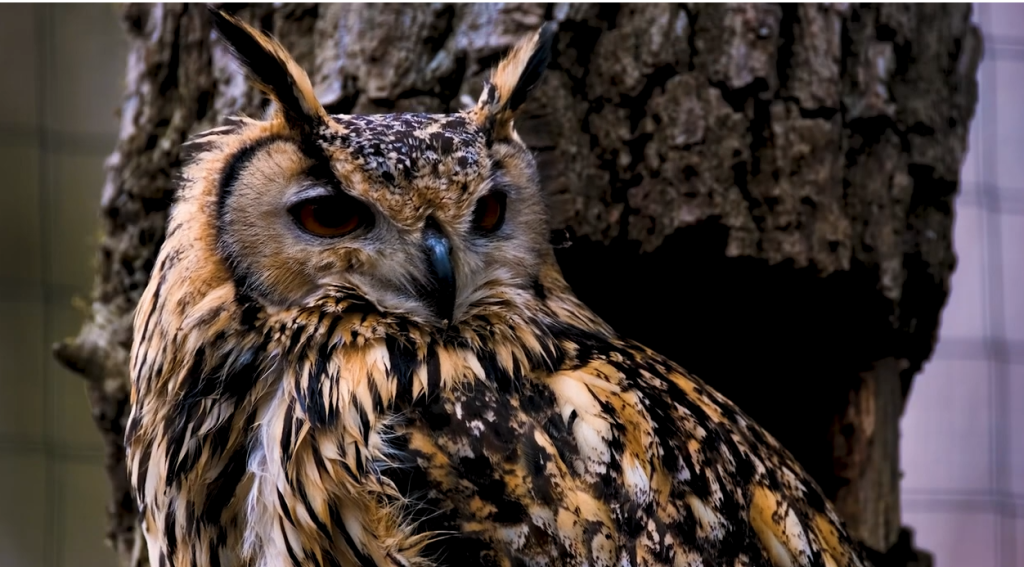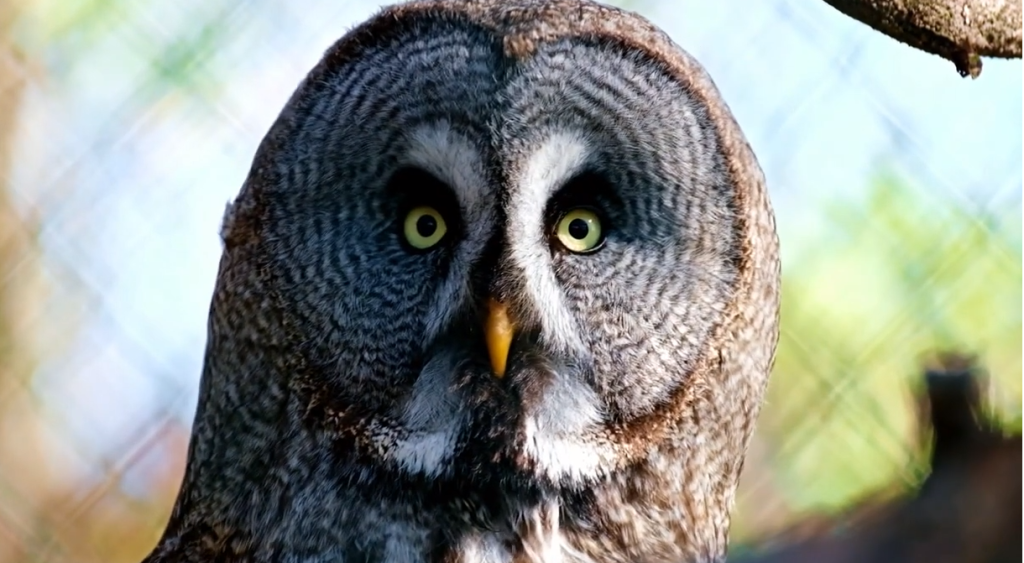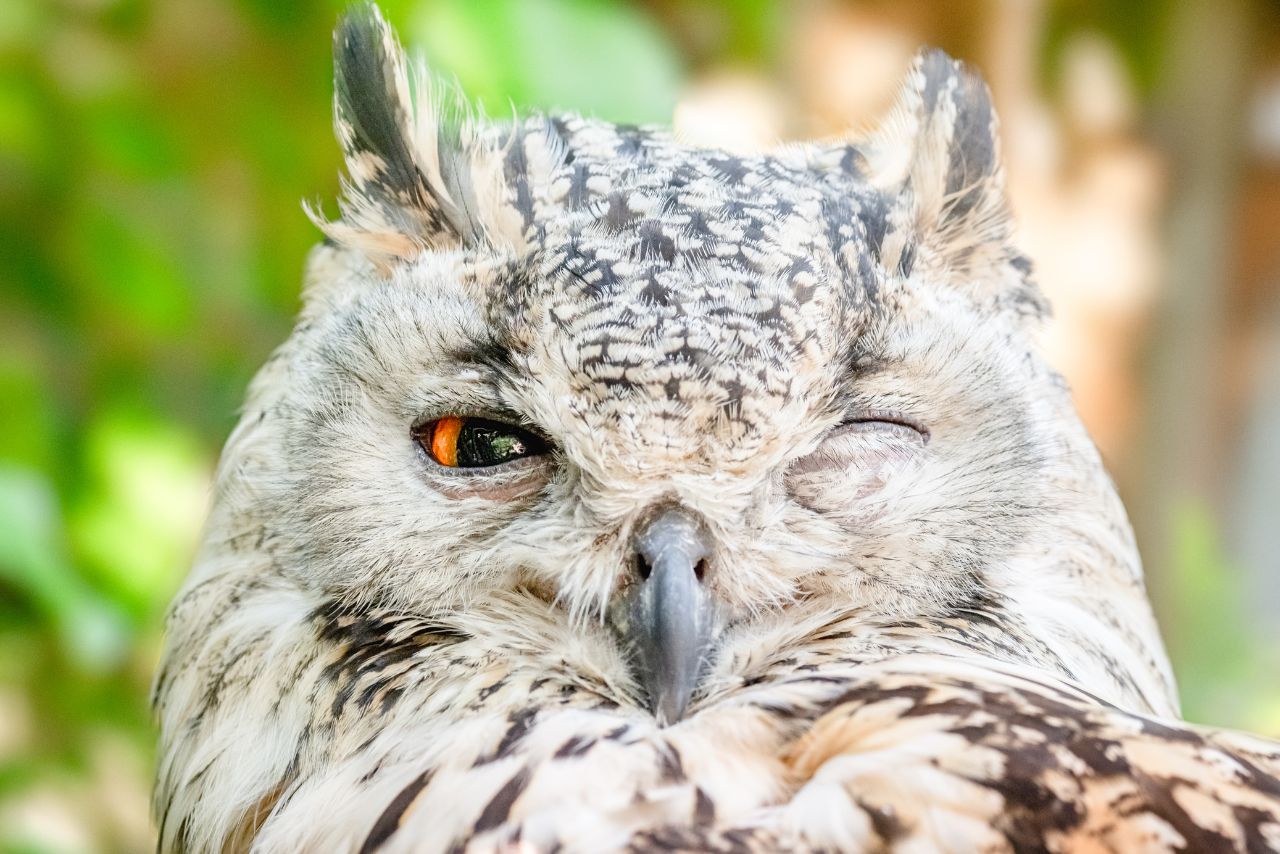Can owls see in the day? This is a common question that arises when we think about these fascinating creatures of the night.
The short answer is yes , owls are primarily nocturnal animals and their eyes are adapted for hunting during low light conditions
Owls have remarkable vision well-suited for their nighttime activities. Their large, forward-facing eyes possess an abundance of rod cells that excel at detecting movement and capturing even the faintest traces of light.
In this article we will go through about facts of owls vision, Let’s delve into the world of owl vision and explore why most species prefer to hunt under cover of darkness.
Can Owls See in Day?
Yes, owls can see in the day. In fact, they have excellent vision in both bright and dim light.
Their eyes are large and have a special membrane called a tapetum lucidum that reflects light back through the retina, which allows them to see better in low light conditions.
Owls also have a wider field of vision than humans, which helps them to spot their prey. Their eyes are also located on the front of their heads, which gives them binocular vision.
This means that they can see objects with both eyes at the same time, which helps them to judge distances accurately.
Some owls, such as the barn owl, are crepuscular, which means that they are most active at dawn and dusk. This is when their prey is most active, and they can use their excellent night vision to their advantage.
Other owls, such as the great horned owl, are more active at night. However, they can still see well in the day, and they will often hunt during the day if their prey is abundant.
The Anatomy of an Owl’s Eyes
- Owls have some unique features that enable them to see exceptionally well, even in low light conditions. Here are the key aspects of an owl’s eye anatomy:
- Large Size: One of the most distinctive characteristics of an owl’s eyes is their size. They are significantly larger than those of other birds relative to their body size.
- Forward-Facing Placement: Unlike many other birds, owls’ eyes are positioned at the front of their face rather than on the sides. This arrangement allows for better depth perception and a wider field of binocular vision.
- Tube-Like Shape: The shape of an owl’s eyeball is elongated and tubular, which enhances its visual acuity by providing more focused images.
- Binocular Vision: Due to the forward-facing placement, both eyes can focus on the same object simultaneously, allowing owls to accurately judge distances and pinpoint prey with remarkable precision.
- Fixed Eye Socket: Unlike humans and some other animals that can move their eyeballs within their sockets, owls have fixed eye sockets that provide stability when they rotate their heads extensively.
- Extraordinary Light-Gathering Abilities: Owls possess a higher number of rod cells in their retinas compared to cone cells, which makes them highly sensitive to dim light conditions such as dusk or night time.
- Adaptive Iris Mechanism: To control the amount of light entering their eyes during different lighting conditions, owls have specialized iris muscles that can dilate or contract rapidly.
| Aspect | Description |
|---|---|
| Large Size | Owls have disproportionately large eyes compared to other bird species |
| Forward-Facing Placement | Their eyes are positioned at the front for improved depth perception |
| Tube-Like Shape | Elongated eyeballs allow for better focus and visual acuity |
| Binocular Vision | Both eyes work together to accurately judge distances and locate prey |
| Fixed Eye Socket | Owls’ eye sockets are fixed, providing stability during extensive head rotation |
| Extraordinary Light-Gathering Abilities | More rod cells in their retinas enable them to see well in low light conditions |
| Adaptive Iris Mechanism | Specialized iris muscles control the amount of light entering the eyes |
Adaptations for Nocturnal Vision

Owls have developed several remarkable adaptations that allow them to excel in their nocturnal lifestyle.
These adaptations enable them to see and hunt effectively in low-light conditions. Here are some key features of owl vision:
- Large Eyes: Owls possess large eyes relative to their body size, which helps maximize light intake. Their spherical shape allows more light to enter the eye, enhancing their ability to gather visual information.
- Binocular Vision: Unlike most other birds, owls’ eyes are positioned at the front of their head, providing a wide field of binocular vision. This arrangement enables them to accurately determine distances and gauge depth perception while hunting in dim lighting.
- Tapetum Lucidum: Owls have an additional layer behind their retina called the tapetum lucidum that reflects incoming light back through the retina, increasing sensitivity and improving night vision capabilities.
- High Number of Rod Cells: Rod cells are responsible for detecting motion and seeing in low-light conditions. Owls have a higher density of rod cells compared to other bird species, allowing them better detection of movement during nighttime hunting.
- Enhanced Color Perception: Despite being primarily active at night, owls can still perceive colors effectively due to specialized cone cells within their retinas sensitive to different wavelengths of light.
- Wide Pupils Control Light Intake: The pupils in owl eyes can dilate widely or constrict significantly depending on lighting conditions; this adaptive feature allows precise control over the amount of light entering the eye.
- Facial Disc Structure: Owl faces exhibit a unique facial disc structure—a circular arrangement of feathers surrounding each eye which serves multiple purposes such as directing sound toward ears and reducing glare from ambient light sources.
Can Owls See in Day or Night?

Yes, owls can see in both day and night. They have excellent vision in both bright and dim light, and their eyes are specially adapted for hunting in both conditions.
Some owls, such as the barn owl, are crepuscular, which means that they are most active at dawn and dusk. This is when their prey is most active, and they can use their excellent night vision to their advantage.
Other owls, such as the great horned owl, are more active at night. However, they can still see well in the day, and they will often hunt during the day if their prey is abundant.
Do Owls Have Good Eyesight?
Yes, owls have very good eyesight. Their eyes are large and have a special membrane called a tapetum lucidum that reflects light back through the retina, which allows them to see better in low light conditions.
Owls also have a wider field of vision than humans, which helps them to spot their prey. Their eyes are also located on the front of their heads, which gives them binocular vision.
This means that they can see objects with both eyes at the same time, which helps them to judge distances accurately
Are Owls Afraid of Light?

No, owls are not afraid of light. In fact, they have excellent vision in both bright and dim light.
Their eyes are large and have a special membrane called a tapetum lucidum that reflects light back through the retina, which allows them to see better in low light conditions.
Why Are Owl Eyes Special?
Owl eyes are special because they are adapted for hunting in low light conditions. Here are some of the special adaptations of owl eyes:
- Large eyes: Owls have large eyes that collect more light than the eyes of most other animals. This allows them to see better in dim light.
- Tapetum lucidum: Owls have a special membrane called a tapetum lucidum in the back of their eyes. This membrane reflects light back through the retina, which allows owls to see better in low light conditions.
- Wide field of vision: Owls have a wide field of vision, which helps them to spot their prey.
- Binocular vision: Owls have their eyes located on the front of their heads, which gives them binocular vision. This means that they can see objects with both eyes at the same time, which helps them to judge distances accurately.
Why Do Owl’s Tend to Come out More Often at Night?
Owls are nocturnal animals, which means that they are most active at night. There are a few reasons for this:
- Less competition: There are fewer predators and prey animals active at night, which gives owls an advantage.
- Better camouflage: Owls’ feathers are often mottled or striped, which helps them to blend in with their surroundings at night. This makes it more difficult for prey to spot them.
- Better hearing: Owls have excellent hearing, which helps them to locate prey even in the dark. They can hear the slightest movements of their prey, such as the rustle of leaves or the movement of air.
- Better vision: Owls have excellent night vision, which allows them to see their prey even in the dark. Their eyes are much larger than human eyes, relative to their body size, and they have more rods in their retinas. Rods are responsible for night vision, so the more rods you have, the better you can see in the dark.
How Far Can an Owl See During the Day?

Owls have excellent eyesight, both during the day and at night. They can see up to 270 degrees in front of them, which is much wider than humans can see. They can also see objects that are very small and far away.
The exact distance that an owl can see during the day varies depending on the species of owl. However, most owls can see at least 100 feet in front of them.
Some owls, such as the great horned owl, can see even further, up to 200-280 feet.
Comparing Owl Vision to Other Birds
When it comes to vision, owls have some unique features that set them apart from other birds. Here’s a comparison of owl vision with that of other avian species:
1. Nocturnal Adaptations
- Owls are primarily nocturnal hunters, which means their eyes are specially adapted for low-light conditions.
- Unlike diurnal birds (active during the day), owls have larger and more tubular-shaped eyes, allowing them to gather as much light as possible in dim environments.
2. Binocular Vision
- Similar to many other birds, owls possess binocular vision, which means they can focus both eyes on a single object simultaneously.
- This ability helps improve depth perception and accurately judge distances when hunting prey.
3. Exceptional Night Vision
- Owls’ retinas contain a high concentration of rod cells that are sensitive to low levels of light.
- Additionally, they have a large number of densely packed photoreceptor cells called rods compared to cones (responsible for color vision).
4. Wide Field of View
- While some diurnal birds also have an impressive field of view, owls take it up a notch with their ability to rotate their heads almost fully in either direction.
5. Enhanced Depth Perception
- Due to the forward-facing position of their eyes rather than being positioned on the sides like many bird species, owls can better perceive depth and accurately strike their prey while flying at night.
6. Color Blindness
- Unlike humans who see colors vividly due to multiple types of cone cells in our retinas,
most owl species lack these specialized cones and have limited color vision, if any.
Watch Video: Can Owls See in Day?
Conclusion and Final Thoughts 💭
Can Owls See in Day? Owls are primarily nocturnal creatures but they do have the ability to see in daylight. Contrary to popular belief, their vision is not impaired during the day and they can function just as well as they do at night.
Owls possess unique adaptations that allow them to navigate through low light conditions effectively.
Their large eyes are specially designed to capture even the smallest amount of available light, while their incredible binocular vision enables them to accurately judge distances and locate prey with precision.
FAQs
How Far Can an Owl See During the Day?
The exact distance that an owl can see during the day varies depending on the species of owl.
However, most owls can see at least 100 feet in front of them.
Some owls, such as the great horned owl, can see even further, up to 200 feet.
What Is the Difference Between Owls’ Night Vision and Day Vision?
Owls’ night vision is not significantly different from their day vision.
However, their eyes are better adapted to seeing in low light conditions, so they may be able to see slightly better at night.
Why Do Owls’ Eyes Glow in The Dark?
Owls’ eyes glow in the dark because of the tapetum lucidum.
This is a reflective layer in the back of the eye that helps to amplify the light that enters the eye.
This is why owls’ eyes appear to glow in the dark.
What Is the Advantage of Owls’ Binocular Vision?
Owls have binocular vision, which means that they can see objects with both eyes at the same time.
This helps them to judge distances accurately, which is important for hunting.
What Is the Disadvantage of Owls’ Forward-Facing Eyes?
Owls have forward-facing eyes, which means that they have a limited field of view.
This can be a disadvantage when they are hunting, as they may not be able to see prey that is approaching from behind.




